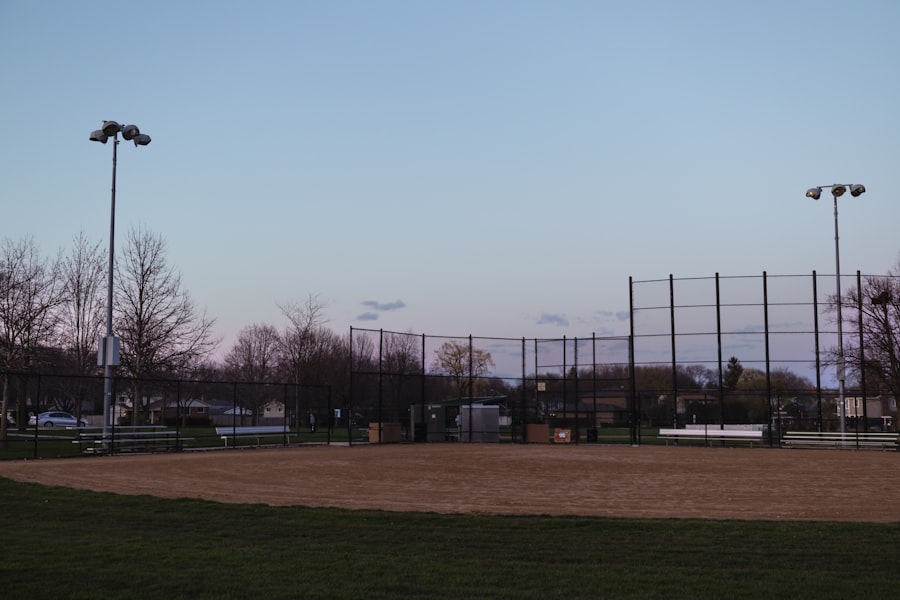Mastering the Art of Softball: Tips for Success
Description
Softball, a sport that has captivated millions around the globe, is often seen as a variant of baseball, yet it possesses its own unique set of rules, equipment, and gameplay dynamics. The game is played on a diamond-shaped field with bases that are 60 feet apart, which is shorter than the 90 feet used in baseball. This difference in distance significantly alters the pace of the game, making it faster and often more exciting.
The standard softball is larger than a baseball, measuring 30.5 centimeters in circumference and weighing approximately 180 grams. The ball’s size and weight influence how players pitch, hit, and field, creating a distinct playing experience. The game can be played in various formats, including fast-pitch and slow-pitch, each requiring different skills and strategies.
Fast-pitch softball is characterized by a windmill pitching style that allows pitchers to throw the ball at high speeds, often exceeding 70 miles per hour. In contrast, slow-pitch softball requires a more arched pitch, which typically results in higher scoring games due to the increased hitting opportunities. Understanding these fundamental differences is crucial for players as they adapt their techniques and strategies to excel in their chosen format.
Additionally, the rules governing gameplay, such as the number of innings, the role of designated hitters, and base running regulations, further define the sport and its competitive nature.
Key Takeaways
- Softball is a team sport similar to baseball, with a few key differences in rules and equipment.
- Proper technique and form are essential for success in softball, including correct throwing, catching, and hitting mechanics.
- Physical conditioning and strength training are important for softball players to improve their speed, agility, and power.
- Mental toughness and focus are crucial for staying calm under pressure and making quick decisions on the field.
- Defensive skills, offensive strategies, teamwork, communication, and embracing the spirit of the game are all important aspects of becoming a well-rounded softball player.
Developing Proper Technique and Form
Mastering the fundamentals of softball requires a strong emphasis on proper technique and form. Whether it’s pitching, hitting, or fielding, each skill demands specific mechanics that can significantly impact performance. For instance, in pitching, the windmill motion is essential for generating speed and accuracy.
Pitchers must focus on their grip, arm angle, and follow-through to ensure that they deliver the ball effectively. A common mistake among novice pitchers is failing to maintain a consistent arm slot, which can lead to erratic pitches. Coaches often emphasize drills that promote muscle memory and reinforce proper mechanics to help pitchers develop their skills.
Hitting is another area where technique plays a pivotal role. A well-executed swing involves a combination of foot placement, hip rotation, and hand positioning. Players must learn to keep their weight balanced and use their lower body to generate power while maintaining a level swing path.
Drills that focus on timing and hand-eye coordination are essential for developing a consistent hitting technique. For example, using a tee can help players practice their swing mechanics without the pressure of a live pitch. Additionally, understanding pitch recognition—being able to identify different types of pitches—can enhance a batter’s ability to make contact and drive the ball effectively.
Improving Physical Conditioning and Strength

Physical conditioning is an integral component of success in softball. The sport demands a combination of speed, agility, endurance, and strength. Players must be able to sprint between bases, dive for ground balls, and maintain their energy levels throughout the game.
For instance, incorporating interval training can enhance a player’s speed on the base paths while also improving their overall cardiovascular fitness.
Strength training should focus on key muscle groups that are utilized during gameplay. Exercises such as squats and lunges can develop leg strength for explosive movements when running or fielding. Upper body strength is equally important for both pitching and hitting; exercises like bench presses and rows can help build the necessary muscle for powerful throws and swings.
Additionally, core strength plays a critical role in maintaining balance and stability during dynamic movements. Incorporating exercises like planks and medicine ball rotations can enhance core stability, which is vital for executing skills effectively on the field.
Mastering Mental Toughness and Focus
| Metrics | Results |
|---|---|
| Number of training sessions | 20 |
| Success rate in overcoming challenges | 85% |
| Improvement in focus | 30% |
| Ability to handle pressure | 90% |
In addition to physical skills, mental toughness is a crucial aspect of excelling in softball. The ability to maintain focus under pressure can often be the difference between winning and losing games. Players face various challenges throughout a game—whether it’s dealing with a tough opponent or overcoming personal mistakes—and developing resilience is key to navigating these situations successfully.
Techniques such as visualization can help players mentally prepare for high-pressure scenarios by imagining themselves succeeding in specific situations. Moreover, fostering a positive mindset is essential for maintaining confidence during challenging moments. Athletes often encounter slumps or periods of poor performance; how they respond to these challenges can significantly impact their overall success.
Encouraging self-talk that emphasizes growth and learning rather than dwelling on mistakes can help players maintain their composure. Coaches play an important role in this process by creating an environment that promotes mental resilience through supportive feedback and constructive criticism.
Enhancing Defensive Skills
Defensive skills are paramount in softball, as they can prevent runs from scoring and create opportunities for outs. Players must develop proficiency in various defensive techniques such as fielding ground balls, catching fly balls, and executing double plays. Fielding requires quick reflexes and precise footwork; players must learn to position themselves correctly based on the batter’s tendencies and the game situation.
Drills that simulate game scenarios can help players practice their defensive skills under pressure. Catching is another critical defensive skill that requires both technique and concentration. Catchers must be adept at receiving pitches, blocking balls in the dirt, and making quick throws to bases to prevent runners from advancing.
Developing strong communication skills with pitchers is also essential for effective game management. Catchers often serve as the on-field leaders who call pitches based on their understanding of both the batter’s strengths and weaknesses as well as the pitcher’s capabilities.
Perfecting Offensive Strategies

Developing a Comprehensive Approach
Offensive strategies in softball are multifaceted and require careful planning and execution. Teams must develop a comprehensive approach that includes hitting techniques, base running tactics, and situational awareness. Understanding when to employ strategies such as bunting or stealing bases can create scoring opportunities while putting pressure on the opposing defense.
Mastering Base Running and Bunting
For instance, a well-timed bunt can catch defenders off guard and allow faster runners to reach base safely. Base running is an art form in itself; players must be aware of their surroundings at all times—knowing when to take risks or hold back based on the game situation.
Executing Advanced Plays
This awareness allows players to make split-second decisions that can lead to advantageous situations on the field. Additionally, understanding how to execute hit-and-run plays or sacrifice flies can significantly enhance a team’s offensive capabilities.
Utilizing Teamwork and Communication
Softball is inherently a team sport that thrives on effective communication and collaboration among players. Each position on the field has specific responsibilities that contribute to the overall success of the team; therefore, fostering strong relationships among teammates is essential for seamless gameplay. Regular practice sessions focused on team drills can help build chemistry among players while reinforcing their understanding of each other’s strengths and weaknesses.
Communication extends beyond verbal cues; non-verbal signals also play a significant role in coordinating plays during games. For example, outfielders must communicate effectively when tracking fly balls to avoid collisions while ensuring that they make successful catches. Infielders need to be aware of each other’s positioning during double plays or when covering bases during steals.
Establishing clear signals for various situations can streamline communication on the field and enhance overall team performance.
Embracing the Spirit of the Game
At its core, softball embodies a spirit of camaraderie, sportsmanship, and respect for both teammates and opponents alike. Embracing this spirit is vital for fostering a positive environment within teams and promoting enjoyment of the game itself. Players should strive to uphold values such as integrity, fairness, and respect—both on and off the field—creating an atmosphere where everyone feels valued regardless of skill level.
Moreover, participating in community events or volunteering for youth programs can help instill these values in younger generations while promoting the growth of softball as a sport. Engaging with local leagues or schools not only strengthens community ties but also inspires future players to appreciate the game’s rich history and traditions. By embracing the spirit of softball, players contribute to a legacy that transcends individual achievements—creating lasting memories that define what it means to be part of this beloved sport.
If you’re a fan of mobile gaming, you may also be interested in checking out the article “Mario Kart Tour”. This popular racing game brings the excitement of the classic Mario Kart series to your smartphone. Whether you’re a seasoned player or new to the game, Mario Kart Tour offers plenty of fun and challenges for all levels of gamers.
FAQs
What is softball?
Softball is a bat-and-ball sport that is similar to baseball. It is played on a smaller field and with a larger ball.
How is softball played?
Softball is played between two teams of nine players each. The game consists of innings, with each team taking turns to bat and field.
What are the basic rules of softball?
The basic rules of softball include pitching the ball underhand, hitting the ball with a bat, running the bases, and fielding to get the opposing players out.
What equipment is used in softball?
The equipment used in softball includes a bat, a ball, gloves for fielding, helmets for batting, and protective gear for the catcher.
What are the different types of softball?
There are two main types of softball: fastpitch and slowpitch. Fastpitch softball is played with a larger ball and faster pitching, while slowpitch softball is played with a smaller ball and slower pitching.
What are the health benefits of playing softball?
Playing softball can help improve cardiovascular health, strength, agility, and hand-eye coordination. It also promotes teamwork and social interaction.





